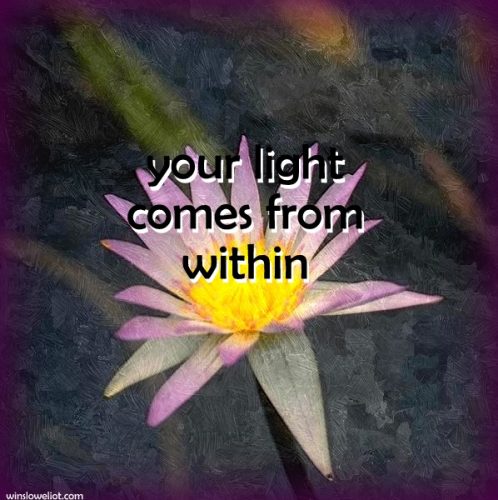 In the northern hemisphere, today is the shortest day of the year. This time of year tends to be focused on its religious significance, but the winter solstice has lived in our DNA from well before the time of organized religion. We can’t help but feel the effect of the darkening of the light, and the return, minute by minute, to more sunshine and warmth. When I was growing up, my mother used to darken our whole house around solstice time so that we could be even more aware of the return of the light. As a teenager, I used to dislike that, but now that I’m so interested in our connection to dark and light, I understand it better. My parents also took us to Newgrange, in Ireland, the 3000-year-old monument of tunnels under a mound that lead to a main chamber that, at sunrise on the winter solstice, is flooded with light. Stonehenge is also famous for its precise connection with the summer and winter solstices, as is the Dorset cursus and many other ancient sites. Just this year, two stone lines near the Cerro del Gentil pyramid in Peru were discovered to mark the winter solstice sunset. So this time of year is significant in ways that are much more subtle, and more real to us, than we might imagine. Embrace the darkness! It’s in the dark that stars appear. It’s in the dark that we enjoy hygge with our friends. When we turn the idea of dark into the feeling of buried treasure rather than gloom, our experience of it is more penetrating and rich. In the heart of the dark there is always light, because as humans we need both in order to experience either.
In the northern hemisphere, today is the shortest day of the year. This time of year tends to be focused on its religious significance, but the winter solstice has lived in our DNA from well before the time of organized religion. We can’t help but feel the effect of the darkening of the light, and the return, minute by minute, to more sunshine and warmth. When I was growing up, my mother used to darken our whole house around solstice time so that we could be even more aware of the return of the light. As a teenager, I used to dislike that, but now that I’m so interested in our connection to dark and light, I understand it better. My parents also took us to Newgrange, in Ireland, the 3000-year-old monument of tunnels under a mound that lead to a main chamber that, at sunrise on the winter solstice, is flooded with light. Stonehenge is also famous for its precise connection with the summer and winter solstices, as is the Dorset cursus and many other ancient sites. Just this year, two stone lines near the Cerro del Gentil pyramid in Peru were discovered to mark the winter solstice sunset. So this time of year is significant in ways that are much more subtle, and more real to us, than we might imagine. Embrace the darkness! It’s in the dark that stars appear. It’s in the dark that we enjoy hygge with our friends. When we turn the idea of dark into the feeling of buried treasure rather than gloom, our experience of it is more penetrating and rich. In the heart of the dark there is always light, because as humans we need both in order to experience either.
